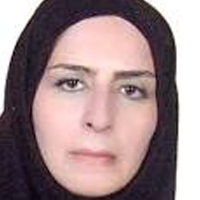Gene Expression and Functional Analysis in Patients with Acute and Chronic Renal Allograft Rejection
Published on: 3rd November, 2023
Kidney transplantation is the therapy of choice for patients with end-stage kidney disease (ESKD). Nevertheless, the main limitation for long-term graft survival is immune-mediated rejection. Some authors have proposed that differences in immune effector mechanisms are influenced by underlying molecular mechanisms; thereby, the identification of differentially expressed genes in acute or chronic rejection in non-invasive samples such as urine may be essential for the identification of potential biomarkers and biological processes associated with allograft outcomes. Our aim was to explore differences in gene expression and functional categories associated with acute and chronic kidney rejection in blood, biopsy, and urine of kidney transplant patients using RNA-Seq. RNA was isolated and sequenced implementing standard protocols. Analyses were addressed to identify differentially expressed genes (DEGs) and Functional Categories of Gene Ontology comparing between samples. Then we focused on immune genes and pathways to identify their association with the allograft. We identified a significant transcriptional similarity between biopsy and urine, in comparison with blood in acute and chronic rejection. Functional analyses suggested an enrichment of immune processes such as antigen processing and presentation, and regulation of B cell receptor signaling pathway in blood of acute and chronic rejection, respectively. Additionally, we observed an increase in expression of chemokines in biopsy and urine of both outcomes along with an increase in chemokine receptors in blood. Our findings suggest that urine is suitable for identifying potential biomarkers and biological processes related to renal allograft rejection, as it shares a significant number of regulated genes with biopsy.
Anesthetic considerations for endovascular repair of ruptured abdominal aortic aneurysms
Published on: 11th September, 2018
OCLC Number/Unique Identifier: 7856179781
Ruptured abdominal aortic aneurysm (rAAA) carries high morbidity and mortality. Advances in endovascular techniques in the last two decades allow for minimally invasive approach for repair of these aneurysms. A succinct but comprehensive pre-operative is essential for delivery of a safe anesthetic for the patient with rAAA. Placement of proximal occlusion balloon in the descending aorta using the rapid control technique can be life-saving. Endovascular aortic repair (EVAR) can be performed under monitored anesthesia care using local anesthetic and IV sedation, and with fewer invasive lines. However, rapid conversion to general endotracheal anesthesia should be expected. Anesthesiologists should be familiar with the hemodynamic management of rAAA and be ready to provide resuscitation to correct for anemia, coagulopathy, and acidemia. In addition, the anesthesiologist should be aware of the common complications related to EVAR, including abdominal compartment syndrome, distal ischemia, and local vessel injury.
The Effect of Variable Doses of Imipramine and Amitriptyline on Learning and Memory
Published on: 14th May, 2024
This study compares the effect of imipramine and amitriptyline on learning and memory. Thirty-five (35) healthy Swiss white (CD1) mice of both sexes weighing 18 g - 30 g were randomly divided into 5 groups (n = 7). Mice in group 1 (control) were administered 0.9% normal saline orally, while mice in groups 2 and 3 were treated with low (1.8 mg/kg) and high (3.7 mg/kg) doses of imipramine, groups 4 and 5 were treated with low (1.8 mg/kg) and high (3.7 mg/kg) of amitriptyline respectively. Treatment was for 21 days before tests. All animals were tested using the Morris Water Maze (MWM) and Novel Object Recognition Task (NORT) to assess visuospatial learning and memory as well as cognitive learning and memory. The results obtained from the Morris Water Maze during the acquisition training showed that the swim latencies were significantly lower (p < 0.05) in the amitriptyline low-dose group compared to the control group. During the reversal training, the swim latencies were significantly lower (p < 0.05) in the test groups compared to the control group. The result for the retention quadrant in the probe trials showed a significant decrease (p < 0.05) in the northeast quadrant in the test groups compared to the control group, with no significant difference in the visible platform day of the Morris Water Maze in the test groups compared to the control group. In the novel object recognition task, the short-term index of habituation was significantly lower (p < 0.05) in the low-dose imipramine and low-dose amitriptyline compared to the control group, the results also showed a significant increase (p < 0.05) in amitriptyline high dose group compared to imipramine and amitriptyline low dose group and the control group. The index of discrimination showed no significant difference among all groups. The long-term index of habituation and discrimination in the memory test showed a significant decrease (p < 0.05) in all the test groups compared to the control group. The results suggest that imipramine and amitriptyline impaired cognitive memory and enhanced visuospatial learning and memory functions.
An overview of the developments of nanotechnology and heterogeneous photocatalysis in the presence of metal nanoparticles
Published on: 20th September, 2022
OCLC Number/Unique Identifier: 9625606691
In general, nanotechnology can be understood as a technology of design, fabrication and applications of nanostructures and nanomaterials, as well as a fundamental understanding of the physical properties and phenomena of nanomaterials and nanostructures. In recent years the development of industries like textile, leather, paint, food, plastics, and cosmetics is enlarged and these industries are connected with the discarding of a vast number of organic pollutants which are harmful to microbes, aquatic systems, and human health by influencing the different parameters. So the fabrication of those nanomaterials (coupled or doped) to form heterojunctions provides an effective way to better harvest solar energy and facilitate charge separation and transfer, thus enhancing the photocatalytic activity and stability. We expect this review to provide a guideline for readers to gain a clear picture of the fabrication and application of different types of heterostructured photocatalysts. In this review, starting from the photocatalytic reaction mechanism and the preparation of the photocatalyst, we review the classification of current photocatalysts, preparation methods, a factor that affects photocatalytic reaction, characterization of photocatalysts, and the methods for improving photocatalytic performance. This review also aims to provide basic and comprehensive information on the industrialization of photocatalysis technology.
Cardioprotective Potentials of Anacardium occidentale Nuts Methanolic Extract in Diabetes-Induced Cardiac Dysfunction in Rats
Published on: 15th May, 2024
Background: The unwanted adverse toxicity displayed by synthetic antidiabetic medicine leads to the search for effective natural medicine to combat diabetes complications. This study investigated the cardioprotective of Anacardium occidentale nuts methanolic in high-fat diet (HFD)/streptozotocin (STZ)-induced diabetic rats.Materials and methods: Forty male adult Wistar were used and fed with HFD for 6 weeks before diabetes induction. The rats were grouped into 5 groups, 8 rats/group. Group I: normal control; Group II: diabetic control; Group III & IV: diabetic rats + 100 mg/kgb.wt & 200 mg/kgb.wt Anacardium occidentale nuts methanolic extract; Group V: diabetic rats + 200 mg/kgb.wt metformin. The rats were sacrificed on the experiment’s last day, blood samples were collected and the hearts were isolated for biochemical parameters estimation.Results: Food intake, water intake, plasmas insulin, Fasting Blood Glucose (FBG), glycosylated hemoglobin (HbA1c), cardiac enzymes, lipid profile, inflammatory cytokines, malondialdehyde, fibrotic marker, caspase-3 in cardiac of diabetic rats were elevated (p < 0.05) significantly. Body weight, cardiac antioxidant, and anti-apoptotic marker levels diminished (p < 0.05) significantly in diabetic rats. 100 mg/kgb.wt & 200 mg/kgb.wt of Anacardium occidentale nuts methanolic extract administration significantly suppressed the plasma insulin, FBG, HbA1c, cardiac lipid profile, cardiac enzymes biomarker, cardiac inflammatory cytokines, cardiac malondialdehyde, cardiac fibrotic marker, cardiac caspase-3, food intake & water intake and increased the body weight, cardiac antioxidant & cardiac anti-apoptotic marker in the diabetic rats.Conclusion: Anacardium occidentale nuts attenuate cardiac injury in diabetes. It could be a natural medicine to manage diabetes-cardiovascular complications.
The lateralization pattern has an influence on the severity of ankle sprains
Published on: 28th April, 2023
Study design: Descriptive study.Background: Many risk factors contributing to ankle sprains have been studied in medical literature with coordination and balance being two of the major endogenous factors described. These are influenced by lateralization – a developmental and adaptive ability determined by the asymmetrical construction of the human brain, with cross-laterality referring to mixed limb dominance.Objectives: To determine whether cross lateralization is a risk factor for the severity of ligamentous injuries in ankle sprains since no data is yet available on such correlation. Methods: Two hundred forty-four patients with acute ankle sprains (136 men and 108 women) were prospectively evaluated between April 2006 and March 2009. The mean age was 30 (ranging from 18 to 76). Clinical and ultrasonographic examinations were performed on the study subjects. Laterality was then assessed by the Coren questionnaire and the AOFAS score was calculated. Patients with syndesmotic injuries and fractures were excluded from the study. Those qualified were divided into straight and crossed groups, according to their laterality type. Results: One hundred forty-four patients displayed straight lateralization, while cross-laterality was found in 100 subjects. Patients in the crossed group experienced more multi-ligamentous injuries than those in the straight group (p = 0.02). Following trauma, a higher AOFAS score was attributed to subjects that displayed a straight lateralization pattern, in comparison to subjects presenting with crossed laterality (p = 0.04).Conclusion: Crossed lateralization is associated with higher severity of ligament injuries in ankle sprains and may be considered a risk factor for calcaneofibular ligament injuries.
Foot Arch Differences in Elderly People at Standing: Considering Gender and Age
Published on: 13th February, 2017
OCLC Number/Unique Identifier: 7286424220
Background: The foot is an important and complex structure that provides support, balance and propulsion to locomotion, thus, its proper care can help to have a better life quality avoiding pain. The medial longitudinal arch is an important structure that is related to injury risks when it shows some impairment. The purpose of this study was to characterize the foot arch index in people in relation to age and gender.
Methods: The sample was composed of a total of 122 subjects, 79 healthy young subjects (40 women and 39 men) and 43 healthy elderly subjects (32 women and 11 men). Ten seconds of standing barefoot plantar pressure was measure through Tekscan F-Scan device, and the data processing, filtering, and arch index (AI) calculation were performed using MATLAB™ 7.0.
Findings: The elderly group presented a lower arch (AI-0.23) than the young group (AI-0.13) (p=0.000); young female and male groups show similar AI, while the elderly female group showed lower arch (AI-0.23) than the elderly male group (AI-0.18) (p=0.033).
Interpretation: The foot arch has a trend to be lower with aging, and even lower within elderly female subjects, probably due to some decrease within plantar muscle’s stiffness, that in turn may be related to lower physical activity and footwear choices.
Detection of Ganglion Cell Loss in Preperimetric Glaucoma by Fourier-Domain Optical Coherence Tomography
Published on: 24th October, 2017
OCLC Number/Unique Identifier: 7317651893
Background: Glaucoma is a multi-factorial optic neuropathy characterized by a loss of retinal ganglion cells with subsequent loss of the retinal nerve fibers ultimately resulting in visual impairment. The macula region has a high density of retinal ganglion cells thereby being a likely region to detect early cell loss .Since glaucoma affects mainly the inner layers of the retina, Ganglion Cell Complex (GCC) mapping can help to detect glaucomatous damage early as compared to the total retinal thickness.
Purpose: To map GCC thickness and average Macular Retinal (MR) thickness with high-speed Fourier-Domain Optical Coherence Tomography (FD-OCT) and correlate it with the Retinal Nerve fiber layer (RNFL) thickness in preperimetric glaucoma.
Design: Observational cross-sectional study.
Methods: Forty four eyes diagnosed as preperimetric glaucoma were studied. GCC, MR thickness and RNFL thickness was mapped using the RTVue FD-OCT system. The GCC thickness map, the deviation map and the significance map were obtained in all cases. Average GCC thickness and MR thickness were correlated with the RNFL thickness.
Results: Average GCC of patients was 85.99±6.9 µm. There was GCC loss in 35 (87.5%) eyes which correlated well with areas of RNFL loss (r=0.408, p<0.001). Nine (22.5%) eyes were seen to have decreased MR thickness. GCC loss correlated well with the loss of average RNFL thickness and MR thickness. Further GCC loss was also seen in 23 (74.19 %) eyes with a normal MR thickness.
Conclusion: GCC analysis may prove to be a robust diagnostic parameter and is complementary to RNFL analysis in preperimetric glaucoma.
Prospective Clinical Study to Find out Epidemiology of Xerophthalmia in Children in a Tertiary Care Centre in India
Published on: 29th December, 2017
OCLC Number/Unique Identifier: 7355977840
Objective: To study the epidemiology of xerophthalmia in children 2-6 years of age in North India.
Methods: A prospective clinical study was done at two tertiary care centers of North India between 2010 to 2016, Cases were selected from routine OPD and children less than 6 years of age were examined by an ophthalmologist. Diagnosis and classification of Xerophthalmia was done according to WHO classification. All the data recording demographic profile, socioeconomic status, other health problems etc were recorded in a fixed proforma. Data was analyzed by SPSS version 16.
Findings: Two thousand nine hundred forty six cases were included in the study after satisfying inclusion and exclusion criteria. The prevalence of night blindness was estimated to be 2.93% (95% Confidence Interval [CI]: 2.53-3.33) among children between 2 and 6 years of age. Xerophthalmia prevalence was 4.43% (95% CI: 4.19-4.67). Prevalence was more in girls than boys and higher in low socioeconomic status.
Conclusion: Vitamin A deficiency is recognized to be a severe public health problem leading to corneal opacity and childhood blindness in most of the areas of North India
Organizational and Human Factors in Dentistry: A Macroergonomic Approach to Maximize Dental Practice Performance and Minimize Burnout and Psychophysical Stress
Published on: 16th December, 2024
The psychophysical impact of a high-complexity environment such as the dental office is not a novelty. This article outlines the organizational and human factors that impact the overall health of dentists, assistants, hygienists, and administrative staff. A careless organizational and human factors approach cannot only function as a stress and error trigger but also affect the highly precise requirements of dentistry and task performance in the daily demands of the office. Ergonomics and human factors principles guidelines should be structured and taught from the basics in dental schools and supported by prevention programs and interventions in the dental professional field, as in other industries, to promote safety, health, and efficiency within the integration of humans, systems, and environments.Usually, the main focus of dentistry research is the physical aspect of the job; the high rates of musculoskeletal disorders are a real problem, but the cognitive-organizational element of the job is not a minimal issue, which highly contributes to physical-emotional exhaustion in the work environment.A fatigued mind impacts the physical aspect of the job, and physical fatigue impacts the mental aspect of the job. This dual effect in a job that requires dealing with anxiety and fear patients, administrative situations in the office, financial aspects, and technical and skill aspects from the dentist, among other requirements, makes dentistry a unique profession.This article addresses the components of the factors that promote cognitive depletion in our field and provides simple tips on controlling them to avoid burnout among dentists. It highlights the importance of awareness of how we manage the organization in the office and the effect on human behavior and performance. It wants to bring to light a common problem for dental practitioners and the workforce to prevent health and performance decrease.




